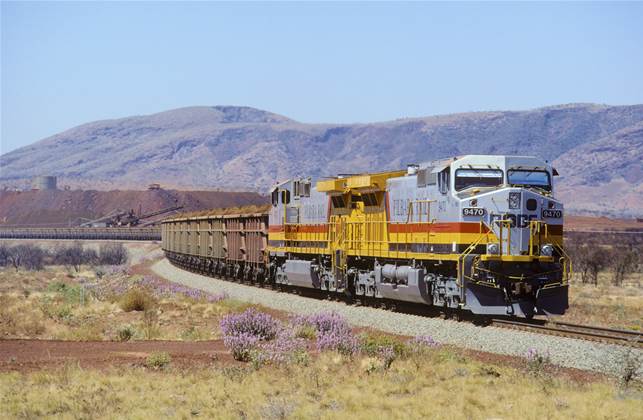Rio Tinto has overhauled its human resources and IT service delivery by launching a unified Employee Centre built on ServiceNow.

Over three years, the ASX-listed miner designed and deployed a comprehensive portal for 150,000 employees to access 76 different HR services as well as IT support.
The program, which was completed on time and budget in November 2024, began as a HR modernisation project in 2021, with Rio Tinto selecting Workday to be its core human capital management solution.
As the project progressed, the scope expanded to include ServiceNow, with the team adopting HR Service Delivery (HRSD) and other capabilities to improve employee self-service and streamline the end-to-end employee lifecycle.
The program kicked off when Rio Tinto’s People practice began scoping for digital solutions to “improve the people experience”, identifying 17 “technology-based initiatives” to support this aim.
Upon a change of HR leadership, these 17 initiatives were then consolidated into one “unified tier one” solution.
Speaking at ServiceNow Knowledge, Rio Tinto senior manager of people technology strategy Melanie Holden said the focus "was very much on enhancing that people experience, liberating time with our people and ensuring that the right work sits with the right people - and we saw technology as a key enabler of that."
“Out-of-the-box functionality was very important for us. We come from highly customised solutions and that was then supported by simple, standard and global processes," Holden said.
“Our challenge the whole way through our design work was really trying to understand whether the core HCM solution could meet all of our functional needs, or whether a system such as ServiceNow was needed to optimise that end-to-end people experience.”
John Davidson, who served as Rio Tinto’s IT product owner for HRSD between September 2023 and February 2025, said the company began identifying function gaps within the core Workday platform both for employees and its service divisions.
“We were running a core HCM program, but we were starting to see gaps and functions that we needed to get done in a specific way to provide the best possible experience to our workforce, as well as our group services business functions,” he said.
Davidson, who is now Rio Tinto's Workday product lead, explained that, initially, the ServiceNow scope in the project was “tiny” but grew quickly as the team identified “change everywhere” and “more of the problems [and] some of the issues that we had to face” within the transformation program.
Midway pivot
During 2022, areas of need gradually developed around functions such as payroll, task instructions, query management and case management.
The following year – now halfway through the HCM program -- Rio Tinto brought in Deloitte to scope where ServiceNow could fill these widening gaps, especially around query management and request management.
Following several months of consultation with Deloitte, the mining company decided to build a “unified employee experience” using ServiceNow HRSD in tandem with Workday as its core HCM platform.
“We established that an organisation of our size, complexity and maturity ... needed a case management system to complement the overall user experience,” Holden explained.
“We decided to couple [ServiceNow] knowledge management and case management together.
“The reason we did that was so that we could really bolster that tier one self-service experience and try and improve case deflection.
“As we went through the design, we identified more opportunities to leverage ServiceNow, really to bring that employee lifecycle together.
“We rolled out [ServiceNow] request management and broadened our payroll processing. We used more of the ServiceNow portal, including landing pages, microsite structures and lifecycle events, which really brought to life the onboarding and offboarding experience, not just within HR, but also for non-HR teams that needed to provide that service.
“As we also went through our core HCM solution, anything that wasn't fulfilled within that scope ended up expanding our ServiceNow scope too.”
Massive achievement
In parallel with HR transformation, Rio Tinto modernised its IT service management landscape, integrating support workflows into the ServiceNow Employee Centre.
Before commencing the HCM program, ServiceNow was already in use at Rio Tinto as the mining company was in the process of retiring its legacy ticket management system, Rio Tinto Ticket Management System (RTTMS), which was “carrying a lot of technical debt”, explained Alex Dunster, ServiceNow manager at Rio Tinto.
The company has recently gone live with ServiceNow’s AI-powered Now Assist for ITSM solution, alongside the vendor’s Yokohama platform release.
As a result of the former’s go-live, Rio Tinto now plans to move all its users off RTTMS by the end of May and begin the legacy platform’s final decommissioning process.
“That's been a massive achievement for us,” Dunster said. “And so now we're able to explore the possibilities for automation, productivity and user experience.
"We've been looking at Now Assist. We've got incident summarisation, resolution, merge generation and AI search so far on the platform. And so they went live on the weekend, and then we're also talking about leveraging the case summarisation and some of the HRSD capabilities there as well.”
Eleanor Dickinson attended ServiceNow Knowledge in Las Vegas as a guest of ServiceNow.



.png&h=140&w=231&c=1&s=0)






.png&w=120&c=1&s=0) EDUtech AU
EDUtech AU
.png&w=120&c=1&s=0) Security Exhibition & Conference 2025
Security Exhibition & Conference 2025
 Integrate Expo 2025
Integrate Expo 2025
 Digital As Usual Cybersecurity Roadshow: Brisbane edition
Digital As Usual Cybersecurity Roadshow: Brisbane edition
 iTnews Benchmark Security Awards 2025
iTnews Benchmark Security Awards 2025











.jpg&h=140&w=231&c=1&s=0)



